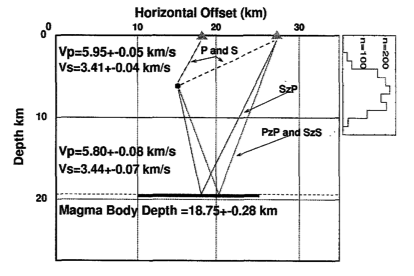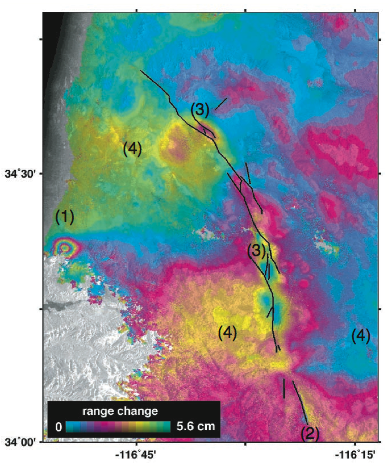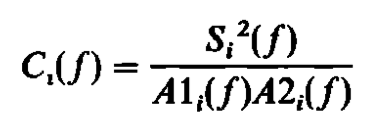Seismic Phase Identification
Earthquakes above and around the magma body produce S waves, which are reflected off the magma body at depth. The incident S waves are converted into reflected P and S waves which can be identified on seismograms from the local network. These converted waves are SzP and SzS in the figure below, where z indicates the depth of the interface.

Balch et al., 1997. Note the SzP, PzP, and SzS phases.
InSAR
Satellites or shuttles orbiting the earth emit electromagnetic waves that are reflected off the earth’s surface back to the antennae. The amplitude and phase of the reflected wave contain information about the reflectivity of the surface and the position along the wavelength of the emitted wave. To measure tectonic deformation, there must be at least two passes, one before the earthquake and one after. The SAR data can be cross-correlated and stacked so that an interferogram, or difference, between the two images is produced. The interferogram must be corrected for the existing topography with a digital elevation model or a third pass of SAR data. The orbital paths of the satellites should be sufficiently similar to produce the interferogram. If fringes are seen in the resulting interferogram, deformation has occurred and can be converted to total deformation by the process of phase unwrapping (Burgmann et al., 2000).

Burgmann et al., 2000
Interferogram in which fringes are observed. Higher density of phase cycles indicate a steeper gradient of deformation.

Burgmann et al., 2000
Phase unwrapped interferogram showing range change or total deformation.
Waveform Cross-Correlation
Two waveforms, A1 and A2, are windowed at the desired arrival (e.g. 1.5 s around the P wave arrival). The cross-spectrum, S(f), is calculated:

where * denotes the complex conjugate and A1(f) indicates the fourier transform of the waveform. The coherence, C(f), is as follows:

A delay time is calculated by fitting a straight line through the phase as a function of frequency (Poupinet et al., 1984).